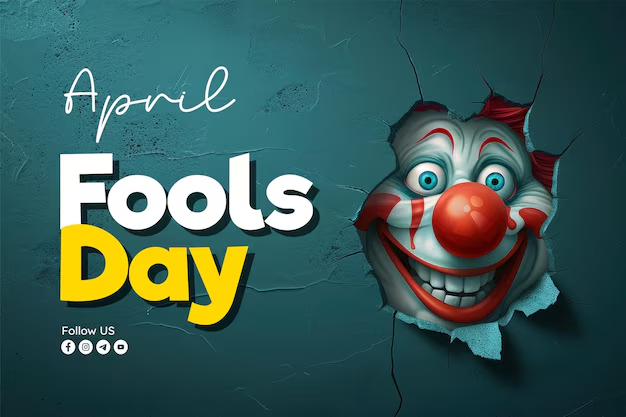Humor is a Jokes vital piece of human communication, filling in as a scaffold between people, societies, and even ages. One of the interesting parts of humor is the manner by which a solitary joke can accelerate into a fountain of clever comments, quips, and counters. This peculiarity, frequently alluded to as the “joke that flashes different jokes,” has been generally examined in different settings, including the New York Times. However, what precisely makes a joke so infectious that it moves others? Furthermore, what difference does this make in our social and social texture?
Understanding the Anatomy of a Joke
A joke, at its center, is an organized type of correspondence that conveys a zinger, frequently with a contort that undermines assumptions. This contort produces chuckling, as it takes advantage of the mental cacophony between what we expect and what we really see. Notwithstanding, the most impressive jokes don’t simply end with a giggle — they wait in the personalities of audience members, starting novel thoughts and, thus, new jokes.

The Role of Timing and Delivery
One of the basic variables in a joke’s capacity to motivate others is its timing and conveyance. A very much coordinated joke can surprise a group of people, making the zinger more viable. The conveyance, whether through tone, look, or non-verbal communication, adds layers of implying that can be deciphered in different ways, prompting a chain response of humor. This is especially obvious in group environments where one joke can make way for a progression of diverting trades.
Why Some Jokes Inspire Others
Not all jokes have the power to spark other jokes. The ones that do share specific characteristics:
- Appeal: Jokes that touch on general encounters or shared information are bound to reverberate with a wide crowd. At the point when individuals connect with a joke, they are more disposed to expand on it, adding their own twist.
- Vagueness: A joke that passes on space for understanding frequently welcomes others to fill in the holes with their own humor. This vagueness makes a fruitful ground for extra jokes, as alternate points of view can prompt different zingers.
- Social Elements: In social scenes, humor frequently works as a social paste. A joke that flashes different jokes can make a feeling of fellowship, as members add to the aggregate humor. This dynamic is major areas of strength for especially affectionate gatherings where individuals are know all about one another’s humor styles.
The Cultural Significance of Humor Chains
The phenomenon of a joke sparking other jokes is not just a trivial occurrence; it has deep cultural significance. In many ways, humor chains reflect the fluidity and adaptability of language and ideas within a culture. They demonstrate how quickly ideas can spread and evolve, often in ways that are unexpected and insightful.
Humor as a Reflection of Social Norms
Humor chains can likewise act as a reflection of cultural qualities and standards. The jokes that catch on and move others frequently uncover what is viewed as OK, no, or entertaining inside a specific social setting. By examining these humor chains, we can acquire understanding into the fundamental convictions and mentalities of a general public.
The Psychology Behind Humor Chains
According to a mental point of view, the capacity of a joke to ignite different jokes can be credited to a few mental cycles. One of the key variables is design acknowledgment. The human cerebrum is wired to perceive examples, and when we hear a joke, our brains naturally look for associations and affiliations. In the event that a joke lines up with existing examples or makes a new, fascinating one, rousing further humor is more probable.
The Role of Memory and Association
Memory assumes a critical part in how humor chains create. At the point when we hear a joke, it frequently sets off recollections of comparative jokes or related encounters. This affiliation interaction can prompt the unconstrained formation of new jokes, as our minds endeavor to interface the ongoing joke with past humor.
The Impact of Media and Technology on Humor Chains
In the present advanced age, the spread of humor has been enhanced by web-based entertainment, images, and online networks. A joke that sparkles different jokes can rapidly become famous online, contacting crowds across the globe surprisingly fast. Stages like Twitter, Reddit, and TikTok have become favorable places for humor chains, where clients expand on one another’s jokes continuously.
Memes: The Modern-Day Humor Chains
Images are maybe the most pervasive type of humor chains in the advanced period. A solitary picture, subtitle, or video can produce innumerable varieties, each adding another layer of humor. This fast development of jokes is a demonstration of the flexibility of humor notwithstanding changing social scenes.
The Future of Humor Chains
As innovation keeps on advancing, so too will the manners by which humor spreads and develops. The eventual fate of humor chains might include more intelligent and vivid encounters, where crowds partake in making and developing jokes continuously. Computer generated reality, expanded reality, and man-made brainpower could assume critical parts in forming the humor of tomorrow.

Conclusion: The Enduring Power of Humor
The peculiarity of a joke igniting different jokes is a demonstration of the persevering through force of humor. It features the unique idea of human correspondence and the capacity of humor to adjust, develop, and join us. As we keep on exploring an undeniably mind boggling and interconnected world, the job of humor in connecting partitions and encouraging comprehension will stay as significant as could be expected.
FAQs
- What makes a joke spark other jokes?
- Jokes that are relatable, ambiguous, and well-timed often inspire others to build on them, creating a chain of humor.
- Why is timing important in joke delivery?
- Timing adds effect on the zinger, surprising the crowd and improving the joke’s viability.
- How do humor chains reflect cultural values?
- Humor chains reveal societal norms and values by showing what is considered funny or acceptable within a culture.
- How does technology influence humor chains?
- Social media and memes allow jokes to spread rapidly, creating new humor chains that can reach global audiences.
- What role does memory play in humor?
- Memory triggers associations with past jokes or experiences, helping to create new jokes based on familiar patterns.



Business dicker I truly appreciate your technique of writing a blog. I added it to my bookmark site list and will
Program iz Very well presented. Every quote was awesome and thanks for sharing the content. Keep sharing and keep motivating others.